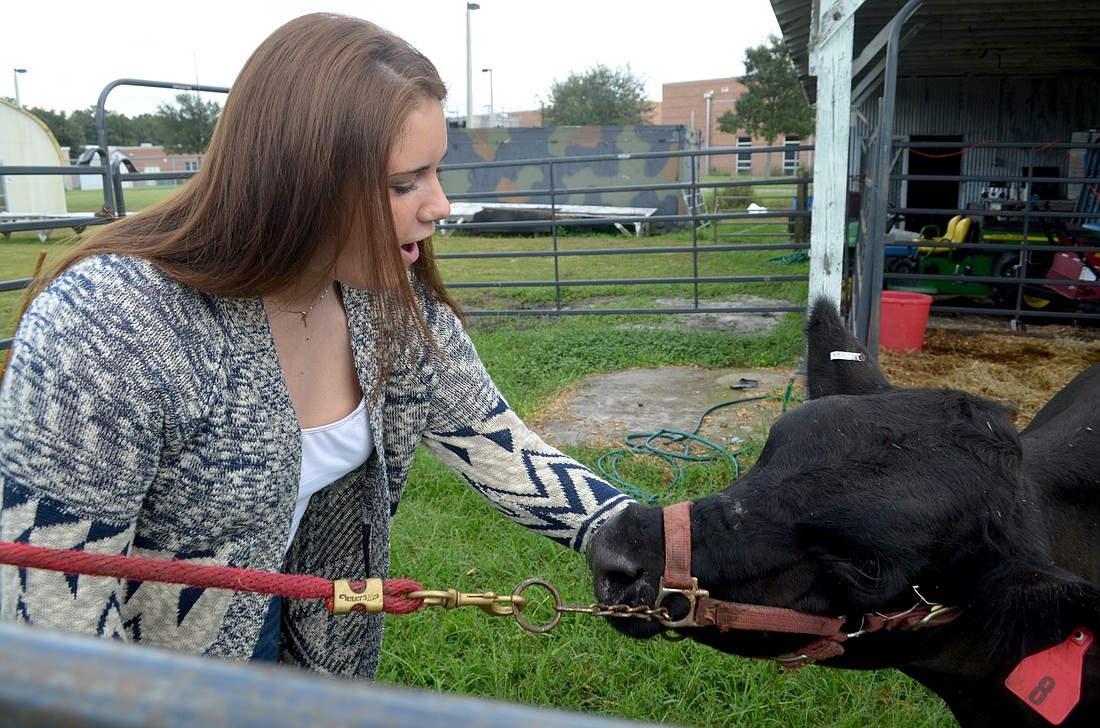- April 23, 2024
-
-
Loading

Loading

EAST COUNTY —When she was hired as an agriculture teacher at Braden River High School 11 years ago, Debra Barry was the sole instructor of the program at the the newly opened school.
She had three classes that totaled 100 students. Today, the program has 500 members and, as of 2012, is the largest in the county and the state, Barry said.
"The school opened with an ag program," Barry said. "That was one of the big programs we wanted to have here. This program has been my little baby that I've watched grow."
The East County school's program is expanding again. Construction started this week on a new pole barn, which will house 10 cattle on the campus.
The barn won't have flooring, just walls and a roof made of wood and metal materials.
On Sept. 22, the Manatee County School District approved the barn, which will cost $101,720 plus costs for other site work and expenses. The district is funding the project.
The building will have a concrete pathway through the center, so Barry and other agriculture instructors Karly Cohenour and Megan Welch can drive a tractor or other equipment through the barn.
A water fountain and sink are also planned for the inside of the barn.
A feeding room will now be located inside the barn, too. Now, the feeding area is located within a small trailer to the side of the current barn, which can only house a few animals, senior Emily Ralston said.
Bleachers for class instruction will be located beside the barn for an outdoor learning environment that introduces classroom topics to real life application.
"Having this kind of outdoor classroom will make it easier for some students to learn about agriculture," Ralston said. "If you don't understand something in class, if you go outside and you can see, smell and hear it, that might help."
Barry hopes the barn will be finished by December, so her seniors can start utilizing the new facility during their last year in the program.
Seventeen-year-old Micah Gallagher, the school's Future Farmers of America (FFA) chapter president, has watched the program blossom since her freshman year.
Pullquote —"Agriculture isn't just animals and farming for rednecks or country kids; it's how we give back to the community," Micah Gallagher, Braden River High senior
As the program adds a new facility and more animals, more students tend to join the program, Gallagher said.
"Four of us worked on beef breeding," Gallagher said. "Then, in 10th grade, we brought in five pig pens, which brought more people in. More people came after we put in the chicken coupe junior year. Now, more kids will definitely want to join the program."
Sprouting interest
In 2005, Barry had a concrete slab outside of her classroom for a few EarthBoxes to grow plants.
The school didn't have any animals on site. The following year, teachers bused students over to Southeast High School, so they could participate in hands-on activities with animals.
A few years later, the school constructed greenhouses, which are used for the horticulture aspect of the agriculture program. Students grow tomatoes, lettuce, cucumbers, peppers and other vegetables in the facility.
"Something is always changing and growing here," Barry said.
The high school's grounds, which used to house a University of Florida research center, came with a potting shed, or small barn area, where just a few pigs and other animals were housed.
But the drainage system functioned poorly.
"We'd come in after it rained the night before and we'd be knee-deep in mud and muck," student Jasmine Stanton said. "It wasn't terrible, but the conditions weren't great."
Eventually, the school outgrew the facility, Barry added.
Students hope the school's push to continuously expand the program will also help battle stereotypes about agriculture and those interested in the field.
"Agriculture isn't just animals and farming for rednecks or country kids," Gallagher said. "It's how we give back to the community. Hopefully this barn will help show people more of what we do."
Contact Amanda Sebastiano at [email protected].